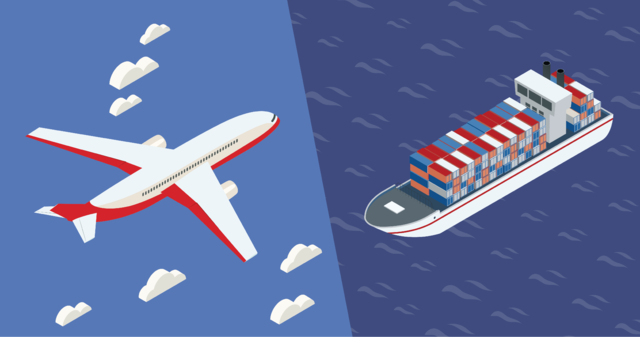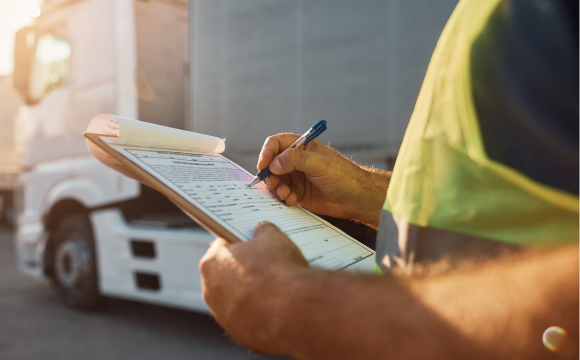- By TOP CHINA FREIGHT
- September 26, 2025
- Air Freight, Shipping
Table of Contents
Air freight cost China to Australia is one of the most important considerations for importers who need fast, reliable deliveries. While sea freight is cheaper for bulk cargo, air transport ensures speed, reduced risk of delays, and predictable schedules. However, costs vary based on weight, size, and seasonal demand. This guide breaks down pricing, influencing factors, and practical strategies to help businesses manage expenses while maintaining efficiency in their supply chains.

What determines air freight cost from China to Australia?
Air freight pricing is based on multiple variables. Importers should understand these before booking shipments:
Weight & Volume:
Airlines charge on chargeable weight, which is the greater of actual weight and volumetric weight.
Origin & Destination Airports:
Cargo from hubs like Shanghai or Shenzhen may cost less than inland airports.
Cargo Type:
Dangerous goods or temperature-sensitive cargo attract surcharges.
Seasonl Demand:
Rates rise before Christmas, Chinese New Year, and Australia’s retail sales peaks.
Fuel & Currency Fluctuations:
Costs can shift with global fuel prices and exchange rates.
By planning around these factors, companies can minimize unexpected expenses and secure better freight deals.
How much does air freight cost from China to Australia?

The cost varies depending on shipment weight and service type. Below is a general estimate:
| Weight Bracket | Estimated Cost (USD/kg) | Transit Time | Notes |
|---|---|---|---|
| 45 – 100 kg | $4.50 – $6.20 | 5–7 days | Standard economy service |
| 100 – 300 kg | $3.80 – $5.00 | 4–6 days | Discounted rates available |
| 300 – 500 kg | $3.20 – $4.50 | 4–6 days | Suitable for bulk air cargo |
| 500+ kg | $2.80 – $4.20 | 3–5 days | Negotiated rates apply |
Note:
Additional costs include fuel surcharges, customs clearance, and destination handling fees. Always request all-inclusive quotes for accuracy.
Why choose air freight over sea shipping to Australia?

Air freight offers clear advantages for certain businesses:
| Method | Transit Time | Cost | Best Suited For | Limitations |
|---|---|---|---|---|
| Air Freight | 3–7 days | High | Urgent, high-value goods | Limited volume, expensive |
| Sea Freight | 25–35 days | Low | Bulk, non-urgent goods | Long lead times |
| Express Courier | 2–4 days | Highest | Small, urgent parcels | Costly for heavy goods |
For industries like fashion, electronics, and pharmaceuticals, the extra cost of air freight is justified by faster lead times and reduced risk of stockouts.
Which airports in China and Australia handle most air freight?
Choosing the right airport impacts both cost and delivery time.
| China Airport | City | Specialization |
|---|---|---|
| PVG (Shanghai) | Shanghai | Electronics, machinery |
| CAN (Guangzhou) | Guangzhou | Textiles, apparel |
| SZX (Shenzhen) | Shenzhen | Electronics, e-commerce |
| PEK (Beijing) | Beijing | Pharmaceuticals |
| HKG (Hong Kong) | Hong Kong | Luxury goods, express hub |
| Australia Airport | City | Specialization |
|---|---|---|
| SYD (Sydney) | Sydney | General cargo, e-commerce |
| MEL (Melbourne) | Melbourne | Consumer goods, perishables |
| BNE (Brisbane) | Brisbane | Agricultural exports |
| PER (Perth) | Perth | Mining & industrial cargo |
How long does air freight from China to Australia take?
Transit time usually ranges from 3–7 days, depending on service type and route.
| Service Type | Transit Time | Best For |
|---|---|---|
| Express Air | 2–4 days | Urgent deliveries |
| Standard Air | 4–7 days | Cost-effective option |
| Consolidated Air | 6–10 days | Small businesses reducing costs |
Although faster than sea, importers should factor in customs clearance at both ends, which may add 1–2 days.
What customs documents are required for air freight?

Documentation is essential for smooth clearance. Typical requirements include:
| Document | Purpose |
|---|---|
| Commercial Invoice | Declares value of goods |
| Packing List | Itemized shipment details |
| Air Waybill (AWB) | Proof of carriage |
| Certificate of Origin | Confirms product source |
| Import Licenses (if any) | For restricted items |
Errors in documentation can lead to fines or shipment delays. Therefore, working with experienced forwarders is highly recommended.
What industries depend most on air freight China to Australia?
Industries that rely heavily on air transport include:
Electronics:
Fast-moving goods like smartphones and components.
Fashion & Apparel:
Meeting seasonal demand and fast-changing trends.
Pharmaceuticals:
Ensuring cold-chain integrity and timely supply.
Luxury Goods:
Protecting high-value items such as watches and jewelry.
E-commerce:
Cross-border deliveries requiring speed.
These industries value speed over cost and cannot rely solely on slower sea freight options.
How can businesses reduce air freight costs?

Importers can use several strategies to manage expenses:
- Consolidation: Share cargo space with other shipments to lower per-kg costs.
- Flexible Scheduling: Avoid peak seasons when rates are highest.
- Accurate Packaging: Minimize dimensional weight charges with efficient packing.
- Long-Term Partnerships: Negotiate better rates with reliable forwarders.
- Mix of Modes: Combine air and sea freight for cost savings on different product lines.
Case Example:
An Australian fashion retailer partnered with a Shenzhen-based freight forwarder to split shipments between express and economy air freight. By adjusting schedules, they reduced annual logistics costs by 15% while still meeting fast-fashion deadlines.
What are the pros and cons of air freight compared to other modes?
| Aspect | Air Freight | Sea Freight | Rail Freight (via Eurasia) |
|---|---|---|---|
| Speed | 3–7 days | 25–35 days | 18–25 days |
| Cost | High | Low | Medium |
| Reliability | High | Moderate | Medium |
| Cargo Type | Limited volume | Bulk | Limited to Eurasia routes |
Air freight excels in speed but comes at a premium, making it suitable for goods where timing is crucial.
Conclusion
Understanding air freight cost China to Australia is essential for businesses balancing speed and expenses. Rates depend on weight, volume, airport selection, and seasonal demand. While more expensive than sea freight, air cargo provides unmatched speed and reliability, especially for time-sensitive industries. By using strategies like consolidation, accurate packing, and forwarder partnerships, companies can reduce costs while maintaining service quality. Choosing the right partner ensures smooth customs clearance, predictable schedules, and competitive advantages in international trade.
Need a Shipping Quote?
If you want expert guidance and peace of mind, our team is ready to assist.
TJ China Freight offers tailored solutions to help businesses of all sizes ship more reliably from China.

FAQ
Q1:Is air freight from China to Australia reliable during peak seasons?
Yes, but capacity is limited, and costs increase during holidays like Chinese New Year and Christmas. Booking early helps secure space.
Q2:Can small businesses afford air freight to Australia?
Yes, by using consolidation services, SMEs can ship smaller loads cost-effectively without paying full cargo rates.
Q3:What is chargeable weight in air freight?
It’s the greater value between actual weight and volumetric weight, ensuring airlines charge fairly for both heavy and bulky cargo.
Q4:Do I need cargo insurance for air freight?
Yes, it is recommended since airline liability is limited. Insurance protects against loss, theft, or damage.
Q5:Can perishable goods be shipped by air to Australia?
Yes, perishable goods like seafood or pharmaceuticals are commonly transported via cold-chain solutions.
